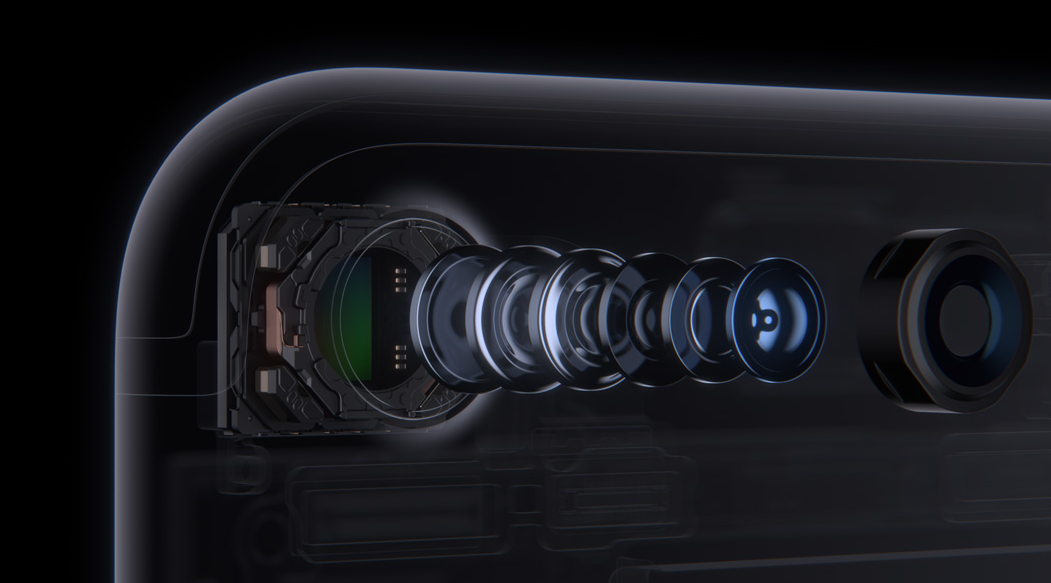
We were rather fortunate enough to have some pretty significant hands-on time with Huawei’s new P10, and LG’s G6 during Mobile World Congress this week. To be transparent, we had access to BlackBerry’s KEYone too, but not at (all) the times that we were taking these trios of photos, so we decided not to include it in this photo shootout; we’ll include it in a later one.
I think we’re rapidly approaching the time in mobile photography, if we’re not there already, that the actual camera in your phone really doesn’t matter quite so much as the camera software used to drive it, and the capabilities of the person using the camera. A talented photographer (which I do not profess to be) can take an amazing photo with just about anything, and equally a fairly ordinary photographer can mince a photo on even the best hardware.
We haven’t used any especially challenging scenarios with these photo samples; just some nice examples of things that you might regularly take photos of during your day to day life. Some plants, food, boring subjects, and some fun too. The real test may come in night photography, which we’ll make the subject of a separate night shoot.
So, without further ado, let’s take a look through these comparisons. We’ll highlight some differences for you, but we want to hear which of these phones you think produces the most enjoyable photos.
| Huawei P10 | LG G6 | Google Pixel |
|---|---|---|
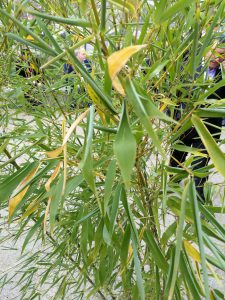 |
 |
Garden: In these three, I think the P10 performed rather well; it focused quickly and on the leaves closest to the lens. It produced nice, vibrant colours that appeared to be closest to nature. The G6 performed a close second, with the colours mostly right, but losing the focus quite quickly. The Pixel simply looked washed out here, and I’m not quite sure why. It has, more clearly, tried to focus on what’s behind the plants rather than the plant itself.
| Huawei P10 | LG G6 | Google Pixel |
|---|---|---|
 |
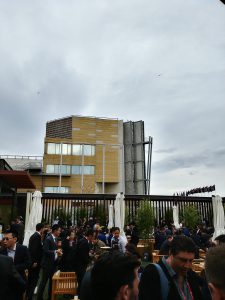 |
Building: This was not designed to be a challenging shot; the building over the rear of the crowd was fairly well lit, the sky was fairly gray, and the lighting overall was fairly good. As you can see though, none of the cameras really captured the perfect shot. Both the P10 and the Pixel look a little darker than they should, with the P10 edging towards the most gray of the three. Both the G6 and the Pixel captured more vibrancy, though the G6 might have the edge; it captured the rich colour of the wooden furniture, as well as the yellow-ish hue of the building’s bricks. The Pixel came close.
| Huawei P10 | LG G6 | Google Pixel |
|---|---|---|
 |
 |
Food: Again, not especially challenging, but the G6 edges ahead. It’s worth noting that all cameras shot in “auto” mode, automatically adding HDR when the camera felt it necessary, and otherwise adjusting white balance, ISO, and other settings on their own. In this case, you can see that the G6 has perhaps slightly overdone the HDR, with colours almost looking a little too rich. The Pixel has done almost the same thing, though you can see it hasn’t quite captured the vibrant red of the cooking pot on the right. This is a hard one to split, though I find myself thinking perhaps the P10 is a little on the other side of things, with a little bit too little colour reproduction. What’s your choice?
| Huawei P10 | LG G6 | Google Pixel |
|---|---|---|
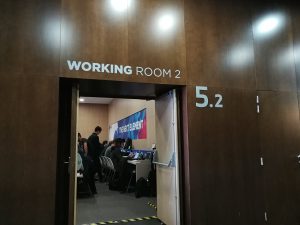 |
 |
Wood: This really only shows a few features; the wood-grain of the wall, the reflected lights on said wall, and the colour of the MWC poster on the wall inside the room. To me, the G6 captures what I saw when I was sitting there. The wood grain really was a rich hazelnut colour, whereas the Pixel and P10 made it look just a little less rich. Both the P10 and G6 captured the bright pinks and blues on the MWC poster, whereas the Pixel washed them out a little.
| Huawei P10 | LG G6 | Google Pixel |
|---|---|---|
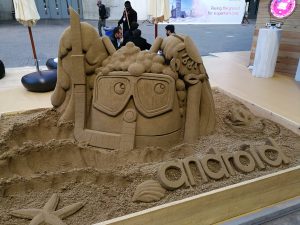 |
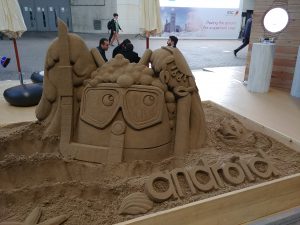 |
Sand: Here we see three really different captures, all with their own qualities. The 10 has clearly opted for HDR here, showing the bring pink colour on the wall to the right, the colour of the pine holding the sandpit together, and the brown-almost-clay quality of the sculpting sand. It also captured the onyx-quality of the stones behind the sculpture. By comparison, the G6 and Pixel seem to have skipped HDR, though they’ve both captured the image well. The G6 is clearly a little more saturated, though I wouldn’t say overly so. The lighting of the Pixel looks slightly unnatural, but only just. I can’t really fault any of these captures, nor really choose my favourite.
| Huawei P10 | LG G6 | Google Pixel |
|---|---|---|
 |
 |
Leaves: Here was a capture lazily shot over lunch, with a flowing ivy-like vine in the front, a bright blue wall behind, and some tables and chairs scattered about; a thoroughly uninspiring photo, but it did show a bit of difference between the phones. The G6 captured bright colours on the wall, the furniture and the leaves. The P10 captured this on the wall and the furniture, but didn’t really quite capture the same bright greens. The Pixel came close to the P10, not really showing the same level of brightness on the furniture, and about the same for the blue wall and the plant-life. The G6 has the engaging photo here, though frankly, the composition of all three is just a little dull.
| Huawei P10 | LG G6 | Google Pixel |
|---|---|---|
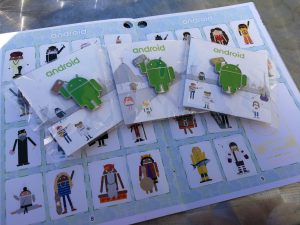 |
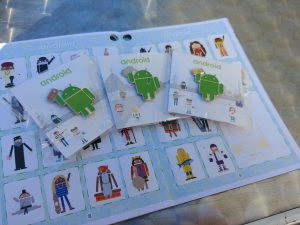 |
Badges: Here’s three samples showing a close up scene captured in shadow. In all three photos, you can see the halo of bright light around the subject, with the subject itself in shadow. This presented a few challenges, though I think all cameras captured the scene fairly well. On this one, I think the Pixel captured the most life-like photo, capturing the light reflections on the crinkling plastic and nice colours on the stickers underneath. I think the G6 came a ridiculously close second, and the P10 just seemed to be a shade darker. You couldn’t really be unhappy with any of the three captures though.
| Huawei P10 | LG G6 | Google Pixel |
|---|---|---|
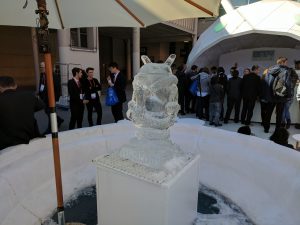 |
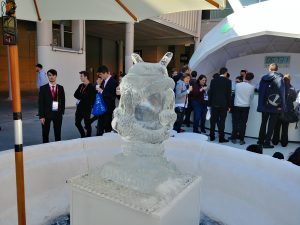 |
Ice sculpture: Of course we had to take a photo of the awesome Android ice sculpture, which sat in white surrounds. The umbrella was held up by a nice wooden pole, which was shown more brightly in the G6 than the other two. Interestingly, while the P10 and Pixel didn’t capture the wooden pole as brightly, they did capture the wooden struts of the umbrella accurately. All three showed the details of the ice sculpture well, but the G6 showed a greater range of lights and darks in the sculpture, whereas the P10 and Pixel didn’t quite so much.
* * *
Conclusion: Google’s Pixel was, to me, the phone camera to beat in 2016, and I held the same view coming into 2017. In 2017, though, I’m not sure that it will remain the best mobile camera, though it’s hard to readily identify why exactly it might not remain so. In these comparisons, it does appear that the G6 has the edge, though without some more hands-on time, I’m not sure that it is the most versatile camera across everything that might grace the lens of a mobile camera.
I’ve spent months with the Pixel, and the last week using Huawei’s P10, and now it’s time to spend some time with the G6 as well. In that time, I’ve found the Pixel has a simply brilliant camera for most day-to-day life, and the P10 could easily perform about the same, though it has a beautiful monochrome capture that simply drops jaws. Seriously, take a look at some of these quick samples:
So, that’s a quick exploration of some of the new mobile cameras out of MWC 2017. What are your thoughts as to where mobile photography is going? Do you think the Pixel has the credentials to remain strong? Is it edged out by the P10 or the G6 in your opinion? Let us know in the comments, and stand by in coming days for our night-shot comparison.


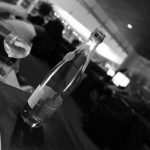



I think Nokia 6 is the best.
It is interesting that in all of those photos, the G6 is the one with the smallest frame, or the closest to the subject. Where they taken from the same distances, or does it actually have a smaller frame? That would have an effect in comparisons.
One additional test I’d like to see is speed to launch and speed to take photo – this doesn’t need to be scientific, but just a side by side video showing camera launch from screen off and time from click to shutter (maybe film each camera separately so you can synchronise the start times after).
The Pixel seems a long way ahead of the G6. The P10 is closer but both Huawei and LG’s images seem over processed – be it over sharpened, overly noise reduced, or over saturated. As for the black and whites of the P10, that’s nothing more than a filter. It’s generally better to shoot in colour because it gives you more options in post production. Once you shoot in black and white you have nowhere else to go – you can’t make a black and white image a colour image unless you have the original RAW file. Shoot in colour,… Read more »
The dynamic range on the Pixel astounds me.
It seems to prefer a colder WB compared to the other two (which seem to prefer warmer tones).
The Pixel also seems to under expose more than the others. From my reading, that’s how it achieves that amazing dynamic range with such little noise.
They’re all great, but the Pixel takes it for me. Although, I might be biased…
Ideally, the comparison would have been more accurate if the cameras where on a tripod so that each photo was from the same standpoint. Exposures would be different with variable content in the three comparison images. So it’s difficult to really compare accurately…..but they all look up to the task….
Yeah, there’s many ways to do this kind of test more scientifically / more accurately. We did what we could with the available equipment and circumstances. I’d much rather have done this with all the phones announced at MWC, instead of just the two that we could readily access. I’d also rather have had time to access a greater variety of scenes to test; the photo subjects we used were ultimately pretty boring.
Sadly, it just didn’t quite work out that way. I figured we’re better to post what we have, rather than just doing nothing.
My only extra thought is perhaps a comment on how close the photos looked to what your eyes saw, because a lot of cameras trade reality for “pop”. Some people prefer enhanced photos and some prefer a capture that is close to reality.
OK you did actually address that in some of the shots.